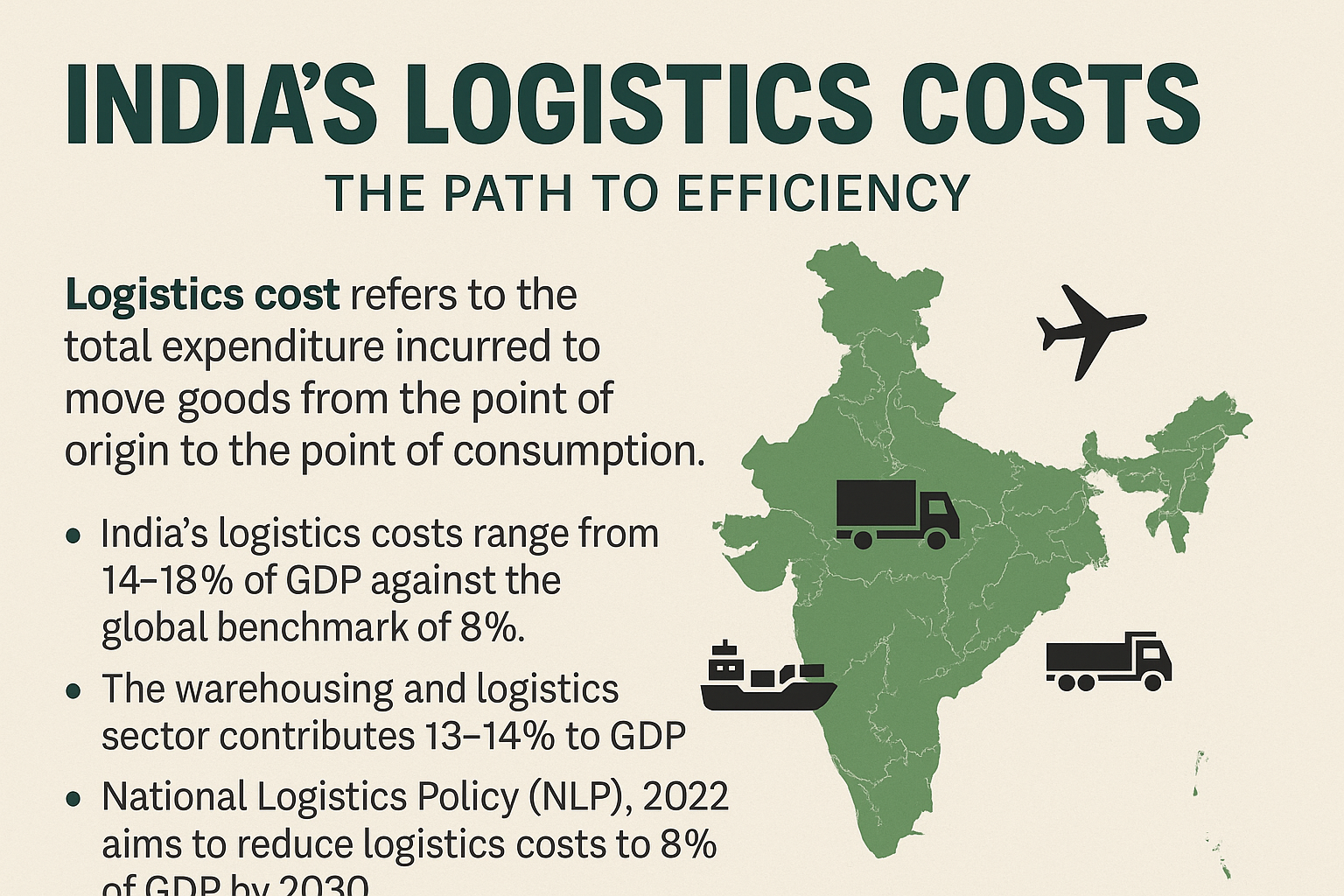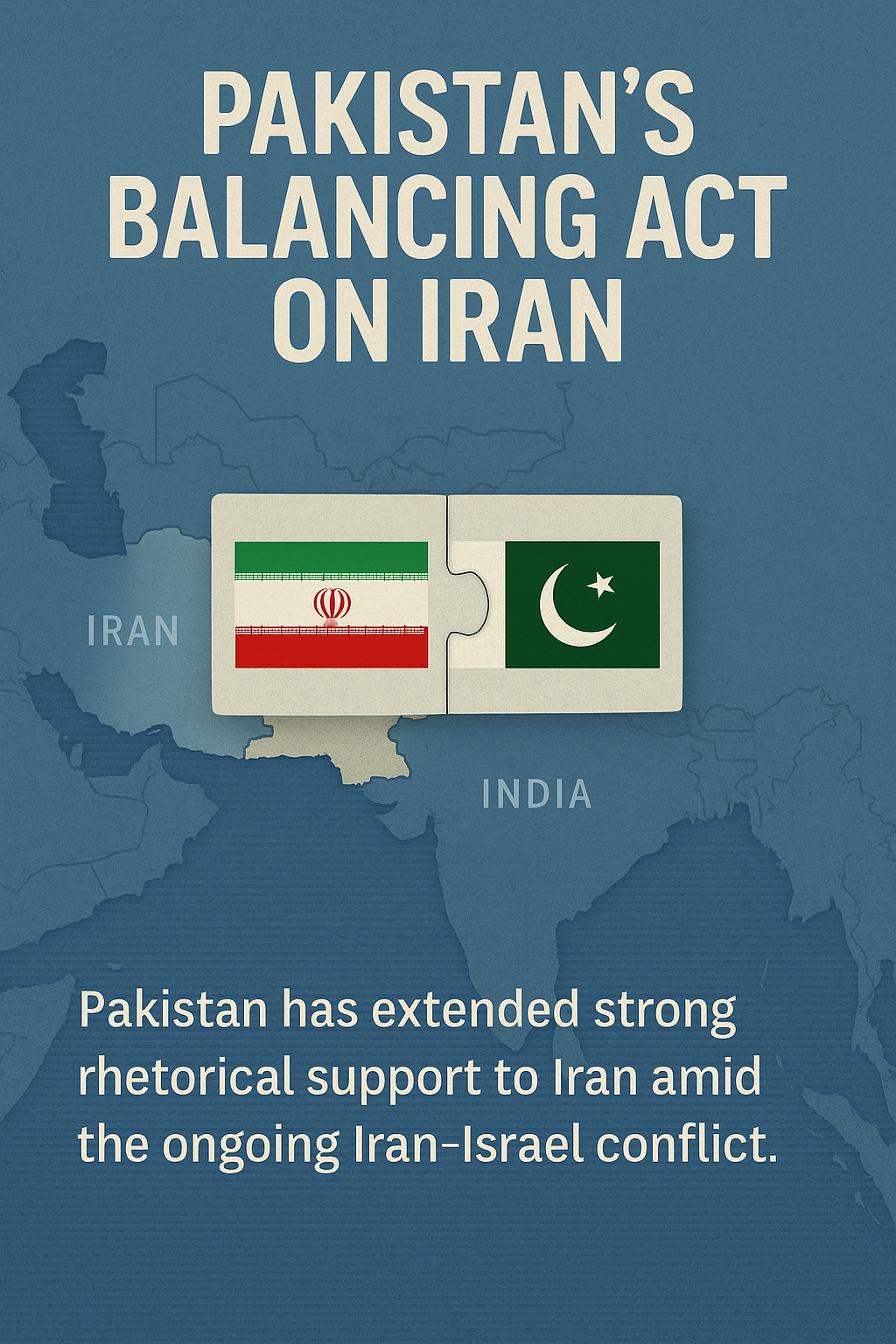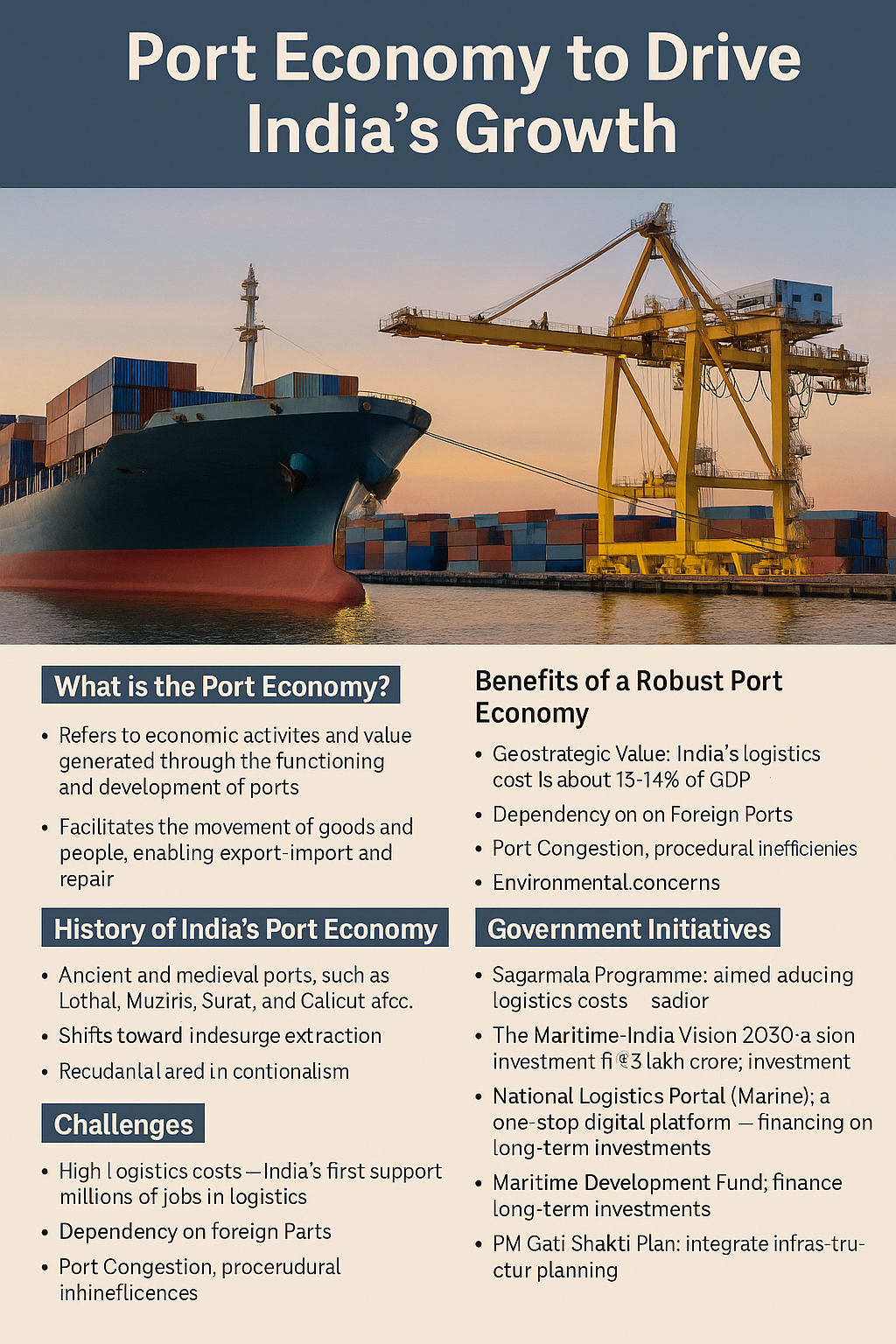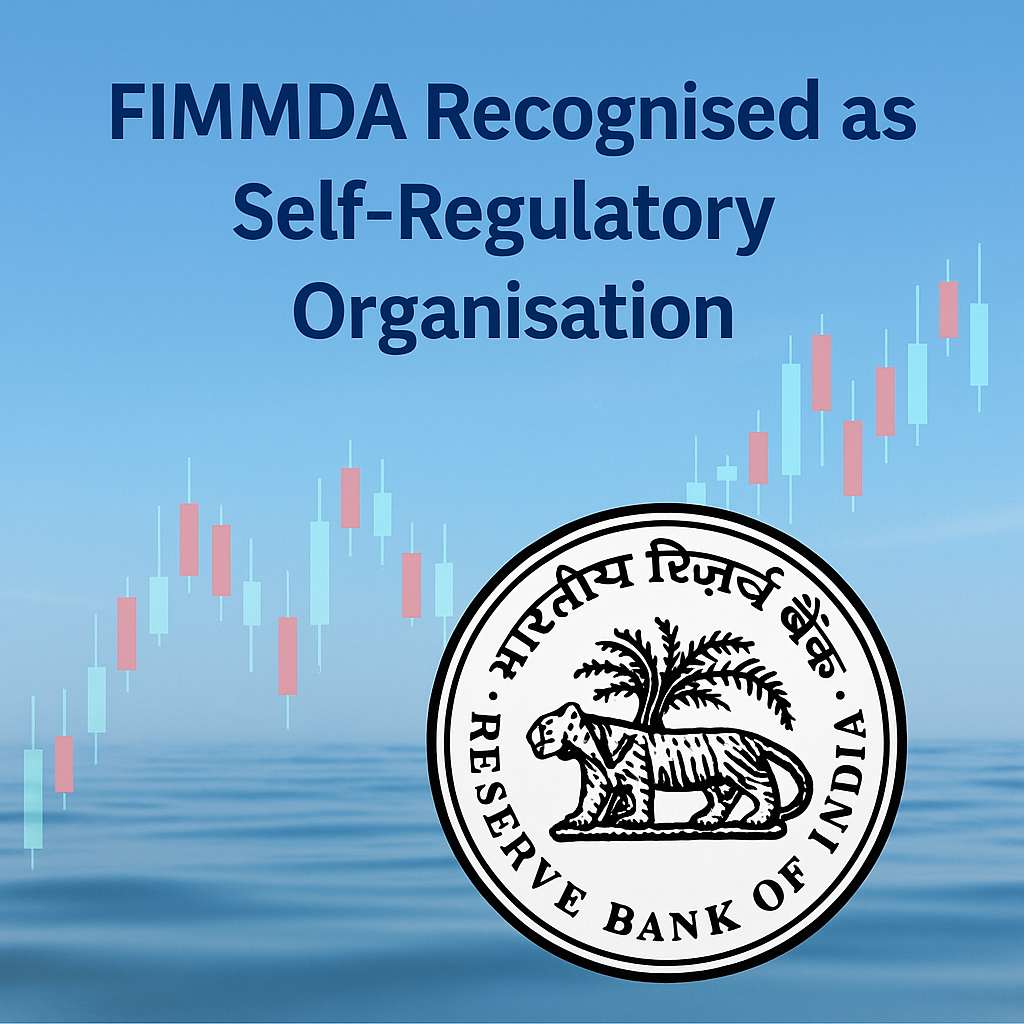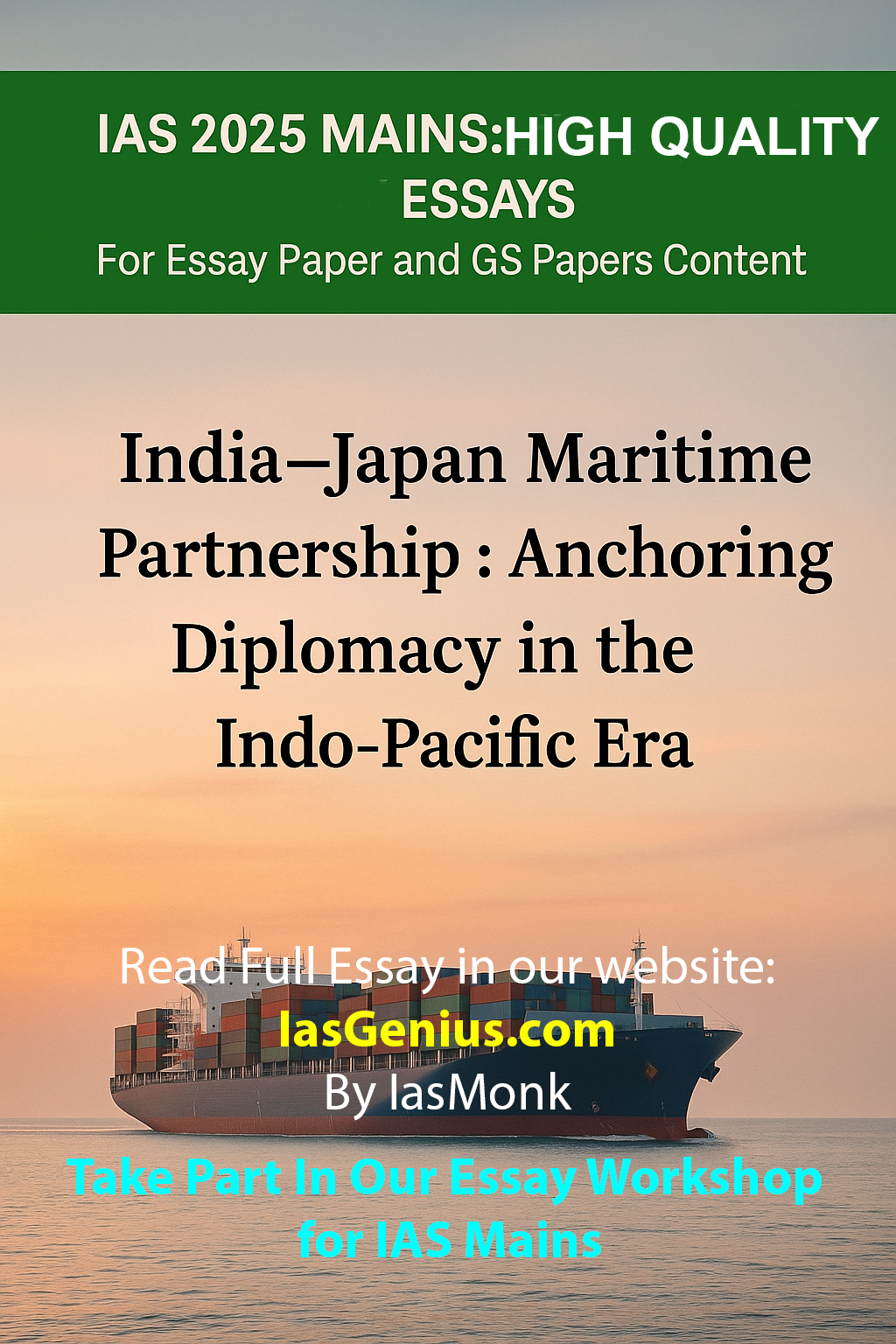
🧭June 4, 2025 Post 3: India–Japan Maritime Pact: Anchoring Stability and Strategy in the Indo-Pacific | High Quality Mains Essay | Prelims MCQs
🚢 India–Japan Maritime Pact: Anchoring Stability and Strategy in the Indo-Pacific

INTERNATIONAL RELATIONS
Post Date: June 4, 2025
Focus: GS2 – Bilateral Relations | Maritime Diplomacy | Indo-Pacific Strategy
🌊 Intro Whisper
When two islanded civilisations — one ancient, one archipelagic — join hands over ocean lanes, they don’t just sign a pact; they sketch a strategy for peace, prosperity, and power in the maritime commons.
🔍 Key Highlights of the Agreement
- 🏝️ Smart Green Islands: Japan will help develop Andaman & Nicobar and Lakshadweep as smart, renewable-powered, disaster-resilient islands.
- ⚓ Digital Ports & Low Emissions: Collaboration on port digitisation, automation, and emission reduction to support India’s Smart Port Vision.
- 🚢 Seafarer Employment: With over 1.54 lakh Indian seafarers, Japan is exploring recruitment to address its maritime labour shortages.
- 🛠️ Shipbuilding Investment: Japan’s Imabari Shipbuilding plans a new shipyard in Andhra Pradesh, supporting Maritime India Vision 2030.
- 🔬 R&D & Tech Transfer: Joint innovation in clean fuel vessels, automated shipbuilding, and sustainable maritime tech with CSL (Cochin Shipyard Ltd).
🌏 Strategic Significance
| Domain | Impact |
|---|---|
| 🌐 Indo-Pacific | Bolsters regional peace, stability, and rule-based order. |
| 🌱 Green Shipping | Advances India’s Maritime Amrit Kaal Vision 2047. |
| 👷 Skill Export | Taps India’s seafarer potential to meet Japan’s demographic gaps. |
| ⚙️ Technology Edge | Infuses next-gen innovation into India’s maritime ecosystem. |
🧭 Context within India–Japan Relations
- 🤝 Historical Roots: From Buddhism to post-WWII peace treaties, the relationship is layered with mutual respect.
- 🛡️ Strategic Partnership: Shared vision of Free & Open Indo-Pacific, Quad membership, and SCRI cooperation.
- 💹 Economic Ties: Japan is India’s 5th largest FDI source, aims for ₹3.2 lakh crore investment by 2027.
- 🚄 Infra Projects: From bullet trains to northeast connectivity, Japan shapes India’s urban future.
- 👨🚀 Tech & Space: Partnerships in civil nuclear, climate technology, and lunar missions.
📚 GS Paper Mapping
- GS Paper 2 – International Relations
- Bilateral ties and strategic partnerships
- Indo-Pacific and maritime diplomacy
- Soft power, economic corridors, and regional connectivity
🪔 A Thought Spark — by IAS Monk
“When sea routes become bridges of trust, and ships carry not just goods but goodwill, the ocean becomes a classroom of cooperation.”
High Quality Mains Essay For Practice :
Word Limit 1000-1200
🟩 IAS 2025 MAINS: High Quality ESSAYS For Essay Paper and GS Papers Content
India–Japan Maritime Partnership: Anchoring Diplomacy in the Indo-Pacific Era
Introduction
In a rapidly evolving geopolitical landscape, the seas are once again becoming the theaters of power projection, strategic cooperation, and economic connectivity. At the heart of this maritime resurgence stands the growing partnership between India and Japan — two democracies with a shared vision for a stable, secure, and rules-based Indo-Pacific region. The recent agreement to deepen maritime cooperation not only reflects bilateral intent but also highlights the new architecture of diplomacy anchored in the blue waters of Asia.
Historical and Strategic Context
India and Japan’s maritime collaboration is rooted in historical goodwill and a post-war trajectory of peaceful cooperation. Japan was among the first to rebuild ties with India after WWII, and since then, both countries have engaged on the basis of mutual respect and democratic values.
Strategically, their convergence is shaped by shared concerns about China’s assertiveness, security of sea lanes, and the global shift toward the Indo-Pacific as the central axis of economic and strategic gravity. As members of the Quadrilateral Security Dialogue (Quad), both nations have cemented their role in preserving maritime order in the region.
Key Dimensions of the Maritime Partnership
1. Infrastructure and Smart Islands
Japan’s decision to support the development of India’s Andaman & Nicobar and Lakshadweep Islands into “smart green islands” reflects a broader agenda of sustainable maritime infrastructure. This includes deploying renewable energy, disaster-resilient architecture, and eco-sensitive technologies — combining Japanese innovation with India’s geostrategic island assets.
2. Green Ports and Digitisation
A significant feature of the collaboration is the joint push for port digitisation and emission reductions. Japanese expertise in smart port operations is aligned with India’s Sagarmala and Maritime Amrit Kaal Vision 2047. Digitisation will enhance efficiency and transparency, while reducing carbon footprints across Indian ports.
3. Employment and Maritime Skilling
India’s large pool of over 1.5 lakh trained seafarers forms a vital workforce for Japan’s aging maritime economy. The latest agreement promotes India as a maritime talent hub, creating jobs domestically while solving Japan’s skilled labour shortages. This cross-pollination of workforce is an exemplar of soft-power diplomacy.
4. Shipbuilding and R&D Cooperation
Japanese shipbuilders, notably Imabari Shipbuilding, are eyeing greenfield projects in India, especially in Andhra Pradesh. Joint research and development in clean fuels, AI-enabled shipping systems, and automation reflects a forward-looking partnership focused on innovation and technological sovereignty.
5. Strategic Maritime Connectivity
India’s location along critical sea lanes and Japan’s export-driven economy converge naturally in maritime logistics. Initiatives like the Chennai-Vladivostok Maritime Corridor and shared participation in global forums like IPOI, FOIP, and the Supply Chain Resilience Initiative (SCRI) serve both economic and strategic objectives.
Significance in the Indo-Pacific Era
✅ Securing the Commons
The Indian Ocean and the Western Pacific are vital for global trade. India and Japan’s growing naval interoperability — through exercises like JIMEX and Malabar — signifies an emerging security arc that acts as a counterweight to aggressive maritime claims in the region.
✅ Economic Corridors and Investment
The maritime partnership dovetails with Japanese investments in Indian logistics corridors, port development, and coastal connectivity. The partnership holds promise for reducing logistics costs and improving India’s manufacturing competitiveness.
✅ Environmental Leadership
Joint green shipping initiatives represent a new frontier in climate-conscious diplomacy. With IMO emission targets looming, India and Japan’s leadership in sustainable maritime practices could serve as a model for the Global South.
✅ Counterbalancing Chinese Dominance
While neither country seeks confrontation, both are wary of Chinese naval assertiveness. Their cooperation is a subtle yet firm articulation of multipolarity and the rules-based maritime order, without undermining their economic engagements with China.
Challenges in Maritime Collaboration
Despite mutual intent, several challenges persist:
- Regulatory Barriers: Japan’s cautious bureaucracy and India’s procedural delays can hamper the timely execution of joint maritime projects.
- Investment Bottlenecks: Large-scale infrastructure projects, such as shipyards or port modernization, often run into issues of land acquisition, environmental clearance, and local resistance.
- Strategic Divergences: While Japan remains a close U.S. ally, India’s strategic autonomy and non-alignment instincts may limit joint military ventures beyond a threshold.
- Under-leveraged CEPA: Despite the India-Japan Comprehensive Economic Partnership Agreement (CEPA), trade in maritime components, electronics, and services remains under-realised.
Way Forward
🔹 Institutional Mechanisms
Setting up a dedicated India–Japan Maritime Council to coordinate shipbuilding, port digitisation, and seafarer training will streamline efforts and prevent bureaucratic fragmentation.
🔹 Blue Economy Cooperation
Jointly promoting the Blue Economy — fisheries, tourism, marine biotech — especially in the Bay of Bengal and Andaman Sea, will bring inclusive growth and coastal empowerment.
🔹 Multilateral Convergence
India and Japan must continue working together in Quad, IPOI, ASEAN+ frameworks to build trust-based norms in maritime governance.
🔹 Skill Transfer and Capacity Building
Establishing joint maritime academies or exchange programs can enhance mutual understanding and transfer of best practices in maritime safety, green logistics, and innovation.
GS Mains Paper Mapping
| GS Paper | Theme | Subtopics |
|---|---|---|
| GS Paper 2 | International Relations | India–Japan relations, Indo-Pacific diplomacy, maritime ties |
| GS Paper 3 | Infrastructure, Economy & Environment | Port development, green shipping, technology transfer |
| GS Paper 4 | Ethics in Public Service & Diplomacy | Cooperation, Peace, Sustainability, Cross-cultural engagement |
Conclusion: Anchoring the Future
In the churning tides of global geopolitics, India–Japan maritime cooperation offers a steady anchor. It is not just about port cranes, digital sensors, or new shipping routes. It is a civilizational handshake at sea — where trust, technology, and traditions converge. Together, these two Asian democracies can shape a more secure, equitable, and sustainable Indo-Pacific — one vessel, one handshake, and one horizon at a time.
Target IAS-26: Daily MCQs :
📌 Prelims Practice MCQs
Topic: India-Japan Maritime Relations
MCQ 1 – Type 1: How many of the above statements are correct?
Consider the following statements regarding the India–Japan Maritime Partnership:
1. Japan is supporting India’s plan to develop smart islands in Andaman & Nicobar and Lakshadweep with a focus on renewable energy and disaster-resilient infrastructure.
2. India has committed to joining Japan’s Maritime Silk Road initiative as part of this cooperation.
3. Japan is investing in a greenfield shipyard project in Andhra Pradesh through Imabari Shipbuilding.
4. Indian seafarers currently make up around 10% of the global maritime workforce.
How many of the above statements are correct?
A) Only two
B) Only three
C) All four
D) Only one
🌀 Didn’t get it? Click here (▸) for the Correct Answer & Explanation
✅ Correct Answer: B) Only three
🧠 Explanation:
•1) ✅ True – Japan has committed to helping India develop smart, green islands.
•2) ❌ False – India has not joined China’s Maritime Silk Road; this is unrelated to India–Japan maritime cooperation.
•3) ✅ True – Japan’s Imabari Shipbuilding is proposing to build a shipyard in Andhra Pradesh.
•4) ✅ True – India contributes about 10% of the global maritime workforce.
MCQ 2 – Type 2: Two Statements Based
Consider the following two statements:
1. India and Japan conduct the bilateral maritime exercise named JIMEX to enhance naval interoperability.
2. Under the latest agreement, Japan will assist India in building nuclear-powered submarines.
Which of the above statements is/are correct?
A) Only 1 is correct
B) Only 2 is correct
C) Both are correct
D) Neither is correct
🌀 Didn’t get it? Click here (▸) for the Correct Answer & Explanation
✅ Correct Answer: A) Only 1 is correct
🧠 Explanation:
•1) ✅ True – JIMEX is the India–Japan Maritime Exercise.
•2) ❌ False – No such agreement exists for nuclear submarine development; cooperation is in shipbuilding and green technologies.
MCQ 3 – Type 3: Which of the statements is/are correct?
Which of the following are correct about India–Japan strategic and maritime ties?
1. Both countries are members of the Quad and share a Free and Open Indo-Pacific vision.
2. India and Japan have signed the CEPA agreement and ACSA (logistics support).
3. Japan is India’s largest bilateral donor and is involved in flagship infrastructure projects like the Bullet Train.
Select the correct code:
A) 1 and 2 only
B) 2 and 3 only
C) 1 and 3 only
D) 1, 2 and 3
🌀 Didn’t get it? Click here (▸) for the Correct Answer & Explanation
✅ Correct Answer: D) 1, 2 and 3
🧠 Explanation:
•1) ✅ True – Both support the Indo-Pacific Oceans Initiative and FOIP.
•2) ✅ True – CEPA (2011) and ACSA (logistics support) have been signed.
•3) ✅ True – Japan funds major infrastructure including Mumbai-Ahmedabad HSR.
MCQ 4 – Type 4: Direct Fact
Which of the following Indian state is likely to host a greenfield shipyard by Japan’s Imabari Shipbuilding under the new maritime cooperation?
A) Tamil Nadu
B) Odisha
C) Andhra Pradesh
D) Gujarat
🌀 Didn’t get it? Click here (▸) for the Correct Answer & Explanation.
✅ Correct Answer: C) Andhra Pradesh
🧠 Explanation:
•✅ The greenfield shipyard project is proposed to be set up in Andhra Pradesh to boost domestic shipbuilding capacity..













